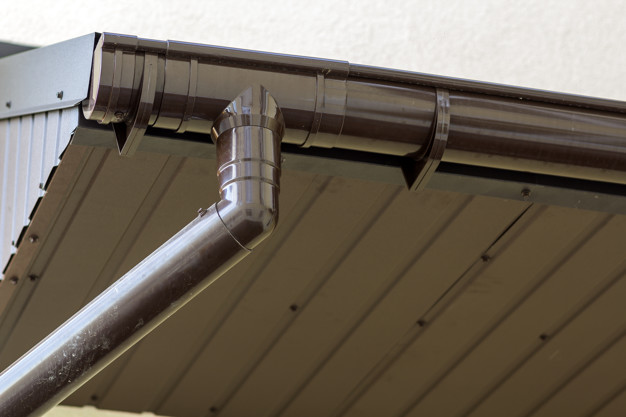Gutter Installation is one of the most important things to protect your property from heavy rains and flash floods. Rain gutters are built to channel rainwater away from the foundation of your home or commercial building. They are quite effective in terms of protecting the structural integrity of the building. Severe weather and inadequate maintenance issues can make your gutter system fail in the long run. Although gutter replacement can be done with some experience, poor gutter installation could render the entire gutter system useless. That’s why you need to know the proper way of gutter installation. This article answers the question of “what is the proper way to install gutters?”
The first step is to size the gutters to suit your building. You need the square footage of the roof, the roof slope, and the intensity of rain in your city to measure the gutter size. If you are not sure about these measurements, you can always talk to a gutter installation professional in the area. Downspout positioning is another important factor to consider when installing new gutters or replacing the old gutters in your home. When you know the positioning of the downspouts, you will know which direction the gutters should be angled. A downspout should cover less than 20 linear feet of gutter. If there are more than 20 feet of gutter, you need to position downspouts at both ends. The best place to position downspouts is right near the corners.
The most important thing is to align the gutters. The gutter system needs to be aligned slightly so that rainwater can easily move to the downspout. You can’t determine the angle simply by looking at the fascia board. The best way to determine the angle of the gutter is to take a chalked line and place one end of it on the fascia board. This is where the high point of your gutter should be. Next, you need to run the line to meet the downspout. In fact, the downspout end of the line should be at least 1/4-inch below the high end of the line for every 20-feet of the gutter. This is the best way to align the gutters so that rainwater can easily move to the downspout.
Lay the entire gutter run on your lawn before attaching the sections to the fascia boards. That way you can easily cut the pieces to suitable lengths before attaching them. Next, cut the downspout holes out and install the connectors. When you seal the downspout connector in place or seal two gutter lengths together, make sure you give them enough time to allow the sealant to dry properly. Once the seal is dry, you should test it with some water.
The final step is to attach the gutters to the fascia boards. First, attach the fascia brackets after drilling a 1/8-inch pilot hole. These holes need to be located right at the downward slope points. Now use 1/4-inch stainless steel lag screws to secure the fascia brackets in place. The lag screws should be at least two inches long. Once all this is in place, lay the new gutter lengths into the fascia brackets. When all the gutters are in place, you need to attach the downspout. Screw the downspout onto the gutter outlet. The ends of the downspout should point directly towards nearby drainage. This is important to avoid flooding in the garden during seasons of heavy rain. These are some of the important things to consider when installing gutters in your home.











